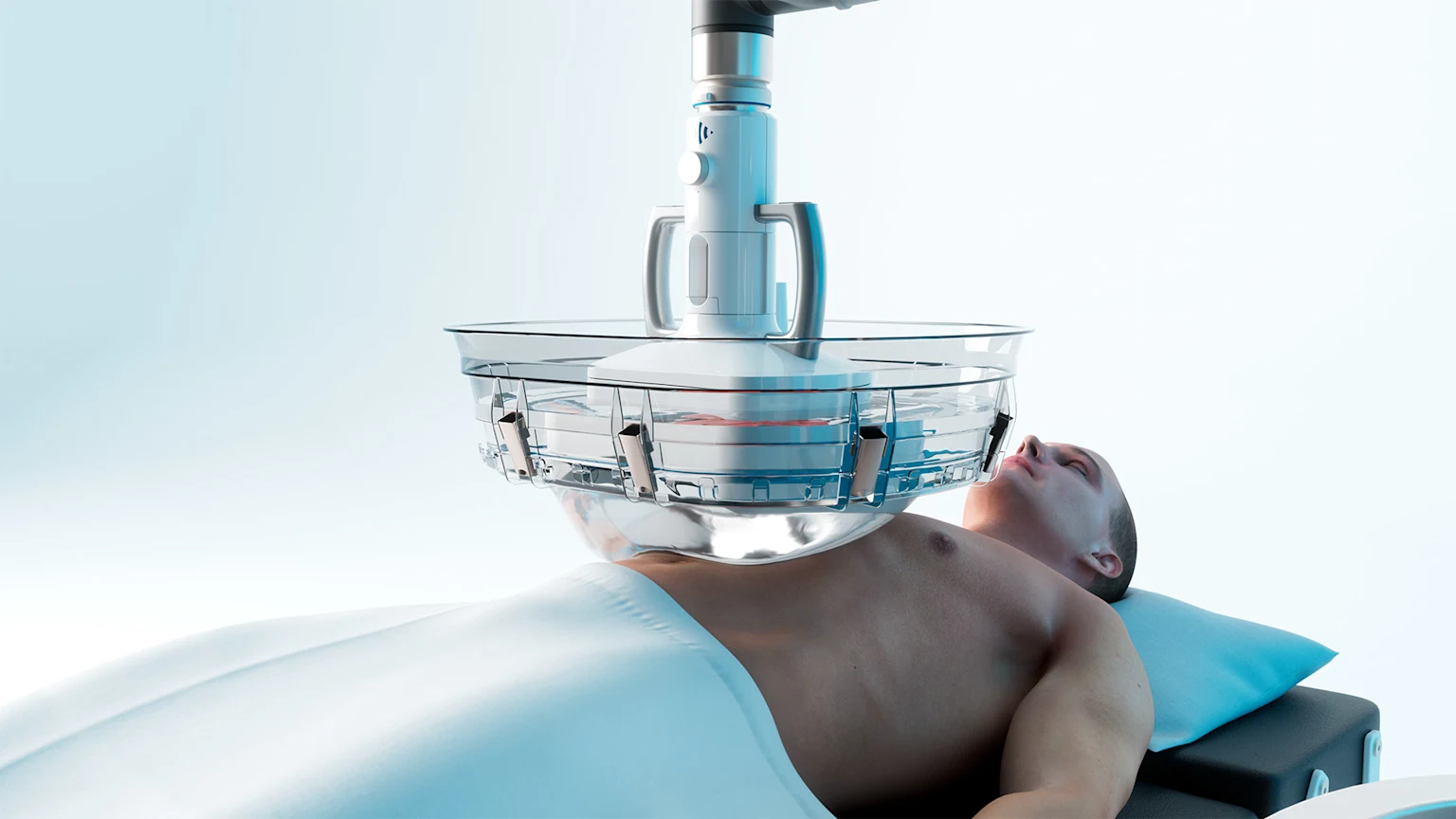
The holiday season brings spike in heart attacks
According to the American Heart Association, more people die from heart attacks during the last week of December than any other time of the year.
In November 2025, Sharp Memorial became the first hospital in San Diego to offer histotripsy — a groundbreaking cancer treatment. Initially to be used on tumors in the liver, the technology offers new hope for cancer treatments that are much better for patients’ quality of life.
“Histotripsy is far easier on the body than traditional forms of cancer treatment,” says Dr. Hamed Aryafar, an interventional radiologist affiliated with Sharp Memorial Hospital. “There’s no surgery or radiation, and it’s outpatient, meaning the patient can go home the same day and be back to work or their normal life activities shortly after.”
The power of ultrasound
Traditional cancer treatments are well-known. Surgery can be used to physically remove tumors. Drugs, such as chemotherapy, kill cancer cells from inside the body. And radiation therapy uses high-energy rays to target cancer cells.
Histotripsy, which was FDA-approved in 2023, makes new use of ultrasound — a technology used for decades.
“Typically, the energy used with ultrasound is very low because we’re using it to visualize something within the body,” explains Dr. Aryafar. “With histotripsy, we’re cranking the energy up and aiming it with pinpoint precision to destroy cancerous tissue.”
To begin the procedure, the patient is put under anesthesia to keep them still. A pad filled with water is placed over the midsection, as sound waves travel better through water. A robotic arm is lowered and aims the ultrasound waves directly at the tumor.

Histotripsy uses a pad filled with water, serving as a medium for high-intensity ultrasound waves.
“These ultrasound beams create tiny air bubbles within the tumor cells,” details Dr. Aryafar. “The ultrasound rays rapidly expand and contract the tiny air bubbles, which destroys the tumor cells. But that only happens to the tissue inside the target area; it’s so precise that there isn’t damage to any surrounding tissue.”
Same result, better outcome
While each of the traditional cancer treatments can be highly effective, they all come with their own pros and cons, as well as side effects that may be hard on a patient’s body.
Histotripsy is best for use on liver tumors that are 3 cm or smaller. This means it won’t be an option for every patient with liver cancer or metastatic tumors (cancer cells that have travelled from another location) in the liver. Larger tumors can be treated, but with some additional planning and time during the procedure.
For candidates, Dr. Aryafar says the benefits are enormous. “The side effects are typically far less severe, and the recovery tends to be much faster without sacrificing effectiveness,” he says.
Comparative benefits include:
Unlike surgery, there is no cutting of the skin or tissue. This means no scarring and minimal risk of infection.
Whereas drugs may have side effects as the medication works its way through the body, histotripsy’s targeted nature avoids this.
While radiation therapy technology has improved its ability to target tumors, there can be damage to adjacent tissue. Histotripsy’s use of targeted ultrasound waves limits that risk.
“With histotripsy, the patient may feel some general soreness around the area of their liver,” says Dr. Aryafar. “But aside from that, they’re back to their everyday life very quickly.”
Just the beginning
As eager as Dr. Aryafar is to offer histotripsy to patients with liver tumors, he is even more excited about what’s next. “Our hope is that within 18 months, we’ll be able to expand histotripsy to use on kidney and pancreatic tumors,” he says. “And with this wonderful tool, the future is wide open beyond that.”
He is optimistic that histotripsy may offer an additional benefit — boosting the patient’s immune system. Because tiny fragments of dead cancer cells remain for a time after the procedure, the immune system tends to spot them and recognize similar cells elsewhere. Research is underway to see the impact this has on patients.
“We can only use histotripsy to destroy tumors we can see by ultrasound,” Dr. Aryafar explains. “But if the patient’s immune system is enhanced through the treatment, it’s possible that we could destroy a tumor in one part of the liver and the patient’s own body could destroy an entirely different one that we couldn’t reach during the procedure.”
Ultimately, Dr. Aryafar expects this to be a game-changer. “Histotripsy opens up a whole new line of cancer treatment,” he says. “The more we use it, the more we’re going to be able to explore its full potential.”
Learn more about cancer; get the latest health and wellness news, trends and patient stories from Sharp Health News; and subscribe to our weekly newsletter by clicking the "Sign up" link below.

Our weekly email brings you the latest health tips, recipes and stories.